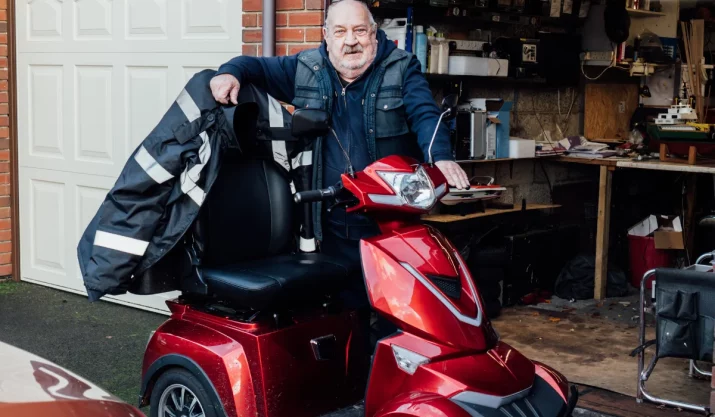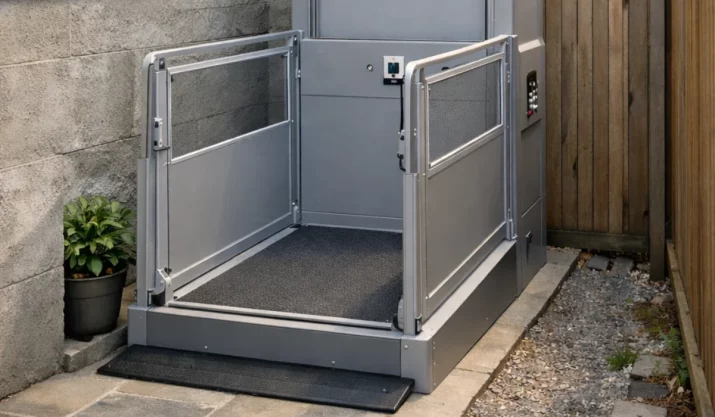A Step-By-Step Guide to Lifting a Mobility Scooter Into a Car Safely

Table of Contents
- Key Takeaways
- Step 1: Assess the Weight and Type of Your Mobility Scooter
- Step 2: Clear Out and Prepare Your Car Boot
- Step 3: Choose the Right Lifting Equipment
- Step 4: Disassemble Your Scooter If Needed
- Step 5: Use a Safe Lifting Technique or Hoist Mechanism
- Step 6: Secure the Scooter for Transport
- Step 7: Double Check Before You Hit the Road
- Need Help Making Your Car Mobility-Ready?
Getting your mobility scooter into a car doesn’t have to feel like heavy lifting—literally or figuratively. Whether you’re heading to a doctor’s appointment, running errands, or taking a road trip up the California coast, knowing how to safely and efficiently load your mobility scooter into your car is a game-changer for independence.
Here’s your step-by-step guide to doing it the right way—without risking your back or damaging your mobility device.
Key Takeaways
- The type and weight of your scooter determine what lift or ramp works best with your vehicle.
- A clean car boot and the right equipment make it easier and safer to load your mobility device.
- Taking apart your scooter and using a hoist or ramp can prevent injuries and protect your equipment.
- A final check and expert help from California Mobility can make every trip smoother and more secure.
Step 1: Assess the Weight and Type of Your Mobility Scooter
Before you think about lifting anything, start with the basics: what kind of scooter are you dealing with?
The weight will determine whether it can be lifted manually or if you’ll need some kind of mobility scooter lift or ramp system.
Folding and portable mobility scooters are designed for easy transport. They’re usually lighter and sometimes even foldable, which makes them easier to fit into your car boot.
On the other hand, full-sized electric wheelchairs and powerchairs might require more advanced lifting options like a hoist or platform lift.
Knowing the type and weight also helps you determine compatibility with your vehicle, especially if you drive an SUV or a smaller sedan.
Step 2: Clear Out and Prepare Your Car Boot
A cluttered trunk (or boot, as it’s sometimes called) makes everything harder. Remove anything that doesn’t need to be there and fold down any back seats if your car allows it.
This gives you the maximum amount of space to work with and minimizes the chance of damaging either your vehicle or your scooter.
You’ll also want to double-check your vehicle’s payload limits.
Lifting a 100-pound scooter into your trunk might sound doable—until you remember your SUV is already packed with groceries and golf clubs.
Step 3: Choose the Right Lifting Equipment
Unless you’re dealing with a lightweight boot scooter, lifting a scooter manually isn’t ideal. Fortunately, there are several tools designed specifically for this job:
- Car hoists (or boot hoists): Attach inside your trunk to lift and swing the scooter into place.
- Scooter ramps: Great for users with foldable or lighter scooters, ramps let you push (or power) your scooter into the vehicle.
- Hitch-mounted lifts: These secure to the back of your vehicle and carry the scooter externally.
- Platform lifts: Fully automatic options that work at the touch of a button—great for users who prioritize ease of use and user experience.
Always make sure your lifter is rated for the weight of the scooter and is compatible with your car model.
Popular brands may offer some excellent options for boot hoists and car hoists specifically designed for SUVs and wheelchair accessible vehicles.
Step 4: Disassemble Your Scooter If Needed
Many scooters are built with portability in mind.
If yours comes apart into a few manageable pieces—like the battery, seat, and base—take advantage of that feature. Disassembling the scooter makes each part lighter and reduces the chances of strain or injury when loading.
Just make sure to follow your scooter’s manual when disassembling to avoid damaging sensitive components. And if you’re worried about reassembly, snap a quick photo of how it looks before you take it apart.
Step 5: Use a Safe Lifting Technique or Hoist Mechanism
If you are lifting by hand (and the scooter is light enough), use proper lifting form: bend your knees, keep your back straight, and lift with your legs. That said, most users benefit from a mechanical assist.
A car hoist or lifter does the hard work for you.
Some car hoists swivel the scooter into the trunk with very little physical effort. Others operate with a remote or a button—perfect for those who want maximum convenience with minimal lifting.
If you’re using a scooter ramp, make sure it’s set up securely and has a non-slip surface.
Step 6: Secure the Scooter for Transport
Once the scooter is in your vehicle, it’s not enough to just shut the trunk.
You’ll want to anchor it to prevent movement while you’re driving. This can be done using straps, brackets, or built-in locking systems on platform lifts.
Not securing your mobility device can lead to damage, not just to the scooter but also to your vehicle. It can even become a safety hazard during sudden stops.
Step 7: Double Check Before You Hit the Road
With your scooter safely stowed, take a moment to do a quick check:
- Is the lift properly stowed and locked?
- Are all parts of the scooter secured?
- Is the scooter affecting visibility or vehicle balance?
Taking a minute here can save you from needing roadside help later.
Need Help Making Your Car Mobility-Ready?
If lifting a mobility scooter into your car sounds like a struggle, California Mobility can help. We specialize in stair lifts, ramps, and home elevators—but we also know mobility doesn’t end at your doorstep.
We can walk you through options like scooter ramps, boot hoists, or full vehicle lifts tailored to your lifestyle and car type.
Whether you’re using a folding mobility scooter, a power wheelchair, or anything in between, we’ll help you find a lift or accessory that fits, without compromising on ease of use.
Give us a call to learn more about our mobility aids and accessibility solutions. Your freedom to move starts with the right tools—and the right team.






